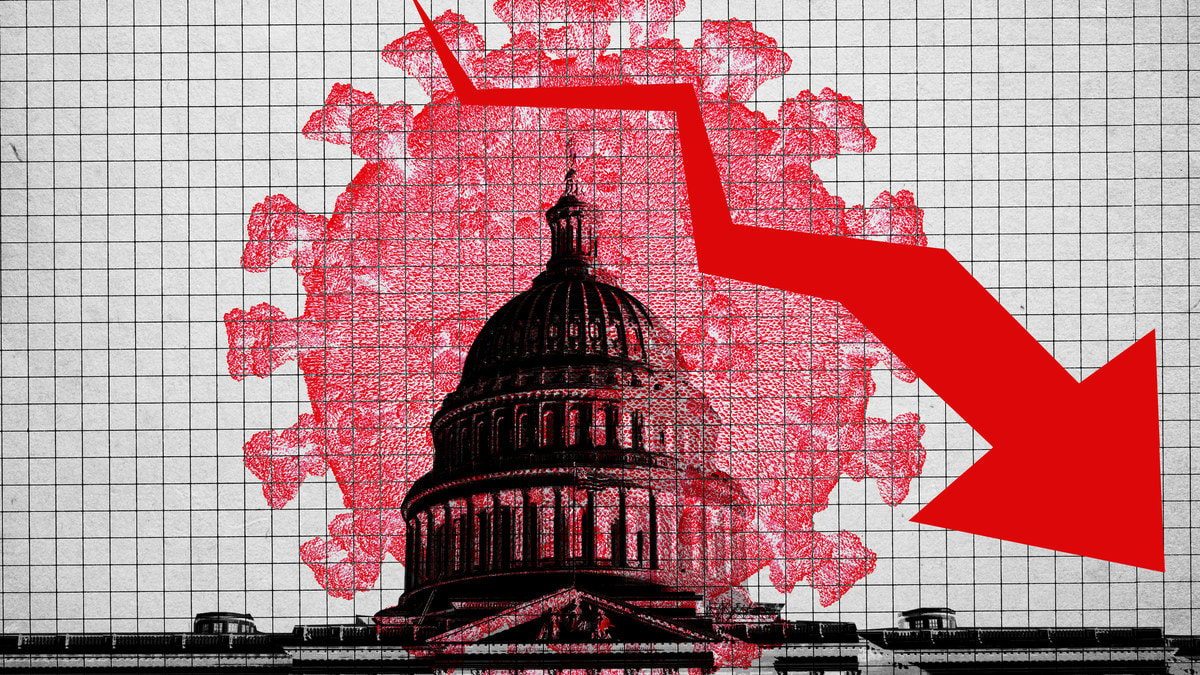
One of the main themes of yesterday's More closer looks at the pandemic response from Seth Meyers was the effect of staying at home, staying safe, and saving lives during the coronavirus pandemic and the desires of President Trump and others to get people back to work sooner than advisable in order to keep the economy going. That was a darkly comic take on the situation of the type I call "ha, ha, only serious." For a truly serious take on the issue of the coronavirus response and the economy, I turn to three videos from FiveThirtyEight on the topic.
I begin with the briefest and most recent, Could Staying Home Protect The Economy And Also Save Lives?
We know our economy is struggling due to coronavirus. But just how much would it cost us to stop quarantine and risk many Americans dying?For more, my readers should click on What Should The Government Spend To Save A Life? The answer is the same as cited in the video.
The VSL, instead of trying to sum up the value of a life, approaches the question from the other direction — how much are we willing to spend to reduce the odds of dying?That's a great quote, one that indicates the $2 trillion in the coronavirus stimulus bill only covers 200,000 people, which is the median number of deaths expected in the U.S. from this pandemic. If it looks like more people are likely to die, then more money should be spent to prevent it.
Economists draw the numbers from multiple sources, including surveys and assumptions about our own choices, like how much additional money people earn for especially dangerous jobs, or how much a premium they’ll pay for a safer car. The estimates do vary, but they fall in the same basic range — the EPA’s valuation falls around $9.4 million, while Viscusi’s latest calculation is $10 million. To put it another way, Viscusi’s estimate means that if a group of 10,000 people is facing a 1-in-10,000 risk of death, they’re willing to pay $1,000 per person to reduce the odds that any given member of the community will die.
These numbers show why spending trillions of dollars to combat a threat like the coronavirus pandemic can be a good investment, despite the high cost. “Let’s say one of our worst-case scenarios comes to pass, and 2 million people die,” said James Hammitt, an economist at Harvard’s T.H. Chan School of Public Health and the director of the Harvard Center for Risk Analysis. “Multiply that by $9 million or $10 million and we’re talking about up to $20 trillion as the value of preventing those deaths. That suggests it’s worth expending a fair amount of our resources to mitigate this.”
Follow over the jump for the other two videos from FiveThirtyEight on the pandemic's effect on the economy.
Now for the oldest of the three videos, How COVID-19 Is Changing The Economy | FiveThirtyEight Politics Podcast.
Economist Tara Sinclair joins Galen Druke and Amelia Thomson-DeVeaux to discuss the economic impact of the COVID-19 pandemic so far.That was from March 20, 2020, before the unemployment numbers came in. COVID-19 Broke The Jobless Claims Chart | FiveThirtyEight Politics Podcast was uploaded on March 26, 2020, just after the first unemployment numbers showing the pandemic's effect were reported.
Economics reporter Ben Casselman joins Galen Druke and Amelia Thomson-DeVeaux to discuss the stunning unemployment claims numbers from last week.My feeling is that the numbers will be even worse when they come out in April, no fooling.
Speaking of April Fools Day, I think I have something appropriately silly, again in a "ha, ha, only serious" way. Stay tuned.
No comments:
Post a Comment